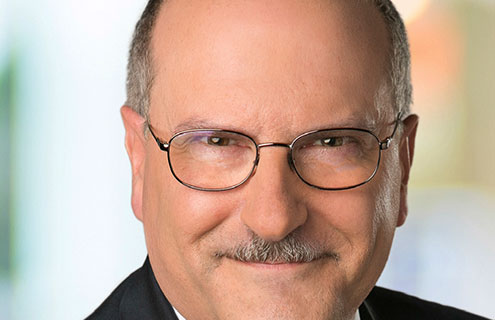DTCC
Murray Pozmanter, managing director of DTCC and head of clearing agency services and global operations and client services, explains how collaborating on distributed ledger technology can ultimately reduce risk
There has been a tremendous amount of activity recently as different organizations unveiled new proofs of concepts and experiments leveraging distributed ledger technology. How do you see the implementation of this technology unfolding over the next five to seven years?
I think we’re going to see a lot of market participants trying to find the ideal area to roll this technology out. I think what we need to be more careful of is creating a siloed environment of different protocols. We need to see firms agreeing on how this is going to be rolled out, at least from a basic standpoint. You can build this system on a set of agreed protocols, but we don’t want see 50 different instances of this in the market, because then we’re not creating the consensus that we want to get to.
Many people have been focused on moving on trade settlement onto the blockchain to achieve T+0. Is that realistic? Is distributed ledger technology necessary to shorten the settlement cycles?
It could be realistic at some point to have T+0 settlement in the equity market, we already have it in the repo market. The reason it currently does not exist in the equity market has nothing to do with the technology that the market runs on. It’s more to do with market behavior and some of the specificities surrounding equity settlement, such as stock lending, trade breakdown which has to be given to retail customers. So it’s not a technological barrier that we need to get through. Blockchain could eventually be part of the solution, but it’s not a technological problem that we need to solve.
We’re moving from T+3 to T+2 now, and the industry could easily move to T+1 in the same way. T+0 would require more changes in the behavior surrounding the equity market, particularly around stock borrows and informing retail customers of trade breakdowns, as well as institutional trade breakdowns.
I do believe that we could get to T+0, it’s just not clear to me that the amount of market structure change that would be required to get us there is worth the expense, whether it would be with blockchain or any other technologies.
DTCC has been working with Digital Asset Holdings using distributed ledger platforms to manage clearing and settlement of repo transactions, and with Axoni and others to test distributed ledger to manage credit default swap trade warehouse implementation.
Why were these asset classes chosen first, and do you see other asset classes as potentially good targets to move onto blockchain technology?
As regards our work in the global trade repository space, we had a technology that we were looking to re-platform anyway. So it was a good opportunity to see if the blockchain could be a prime candidate for us to use as the underlying architecture for doing that re-platforming.
I think what you need to be careful of when considering the blockchain use cases is not just using the technology to re-platform for re-platforming’s sake. If there’s a replacement of technology already being planned, then it makes sense to look and see if it can be done more efficiently and more cheaply with the blockchain. Conversely, when you look at the repo case study, we’re not going to be re-platforming. In fact, we’re going to be looking to maintain as much of the current market structure as we can. That market already settles on a T+0 basis, but what we can do is netting on T+0, or enable intra-day netting with DTCC’s Fixed Income Clearing Corporation (FICC). The potential we see for blockchain in this market is to enable us to take that last step, having added to the existing infrastructure, and not having replaced it.
So the blockchain, rather than displace the intermediary is actually assisting it?
Absolutely. We’re going to see that in more and more places as people become familiar with how to use the technology and where the optimum use cases are.
There are certainly things that can be changed, employers that can be disintermediated through some of the market structure changes. Everyone is in agreement that it’s an opportunity to make some market structure changes and we certainly want to be at the forefront.



